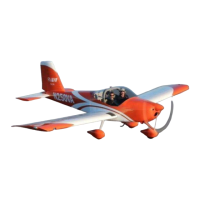Rev. 5
3-11
LANDING GEAR
LIFTED AIRCRAFT MUST BE SECURELY SUPPORTED BY STATIC
STANDS OTHER THAN THE JACKING DEVICE
. THE AIRCRAFT MAY NOT MOVE FROM
ATTEMPT TO SHAKE HORIZONTALLY OR VERTICALLY
.
LWAYS USE PADDED STANDS AND ALWAYS DISTRIBUTE THE LOAD
ALONG A RIVET PATTERN WITH SEVERAL INTERSECTING RIVET PATTERNS
.
EFER TO
ENERAL
ENERAL
ROCEDURES
NDEX FOR INSTRUCTIONS
ON LIFTING AND SUPPORTING THE AIRCRAFT.
♦
♦ Flashlight
♦ Inspection mirror
♦ Torque wrench
♦
♦ Straight edge
♦ Saw horses
♦ Tensile weight scale
• Check all landing gear components; attach locations, and fasteners for cracks and
any other signs of fatigue. Throughout the inspection of the landing gear, be
observant for signs of hydraulic fluid leakage.
• Inspect each landing gear-leg and attach point Check for evidence of black dust at
the attach points which is an indicator of movement.
• Test the security of each of the landing gear-legs. The landing gear components
may not have any free play in any direction.
• Check that all attach hardware is at proper torque. Remember to account for the
prevailing torque of the nut. If a torque wrench is used on the head of the bolt also
account for the torque to overcome the friction to turn the bolt shank within the
assembly.
• Check the main U-1220 gear legs for corrosion or bubbled paint that may lead to
corrosion.
• Test the security of the brake lines and inspect for signs of wear.
• Grab and shake the wheels and tires to check for bearing looseness.
• Check for smooth, low resistance rotation of each wheel.
• Check for excessive play in both brake calipers.
• Check the brake shoe linings, brake disc and wheel assembly per Matco
manufacturer specifications.
• Rotate the nose fork about the gear-leg. Check for lubrication. Check the break-out
force per KAI.

